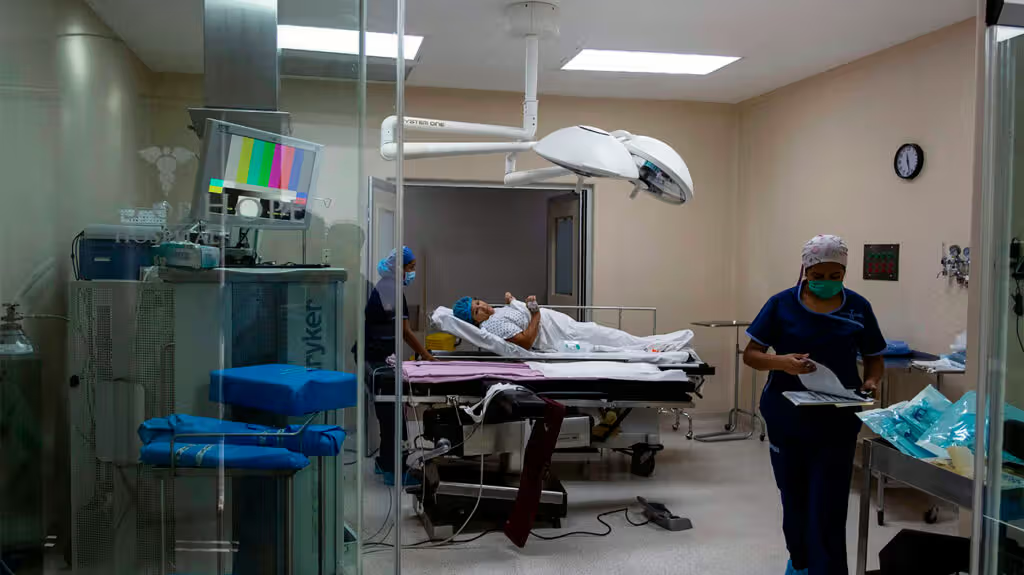- Home
- Medical news & Guidelines
- Anesthesiology
- Cardiology and CTVS
- Critical Care
- Dentistry
- Dermatology
- Diabetes and Endocrinology
- ENT
- Gastroenterology
- Medicine
- Nephrology
- Neurology
- Obstretics-Gynaecology
- Oncology
- Ophthalmology
- Orthopaedics
- Pediatrics-Neonatology
- Psychiatry
- Pulmonology
- Radiology
- Surgery
- Urology
- Laboratory Medicine
- Diet
- Nursing
- Paramedical
- Physiotherapy
- Health news
- Fact Check
- Bone Health Fact Check
- Brain Health Fact Check
- Cancer Related Fact Check
- Child Care Fact Check
- Dental and oral health fact check
- Diabetes and metabolic health fact check
- Diet and Nutrition Fact Check
- Eye and ENT Care Fact Check
- Fitness fact check
- Gut health fact check
- Heart health fact check
- Kidney health fact check
- Medical education fact check
- Men's health fact check
- Respiratory fact check
- Skin and hair care fact check
- Vaccine and Immunization fact check
- Women's health fact check
- AYUSH
- State News
- Andaman and Nicobar Islands
- Andhra Pradesh
- Arunachal Pradesh
- Assam
- Bihar
- Chandigarh
- Chattisgarh
- Dadra and Nagar Haveli
- Daman and Diu
- Delhi
- Goa
- Gujarat
- Haryana
- Himachal Pradesh
- Jammu & Kashmir
- Jharkhand
- Karnataka
- Kerala
- Ladakh
- Lakshadweep
- Madhya Pradesh
- Maharashtra
- Manipur
- Meghalaya
- Mizoram
- Nagaland
- Odisha
- Puducherry
- Punjab
- Rajasthan
- Sikkim
- Tamil Nadu
- Telangana
- Tripura
- Uttar Pradesh
- Uttrakhand
- West Bengal
- Medical Education
- Industry
Wound closure with triclosan-containing sutures reduce risk of surgical site infection: JAMA

A new study published in the Journal of American Medical Association found a decreased incidence of surgical site infections being linked to wound closure with sutures containing triclosan.
To prevent colonization on the suture surface and reduce the risk of surgical site infection, triclosan, a bactericide chemical, has been put to sutures. Sutures containing triclosan are advised by international standards as a means of preventing surgical site infections. The use of triclosan-containing sutures in clinical practice is still controversial, nevertheless, as a number of recent randomized clinical studies (RCTs) have shown conflicting findings.
The Cochrane CENTRAL, PubMed, and Embase databases were searched between January 1, 2015, and March 14, 2023. It was conducted in accordance with the Preferred Reporting Items for Systematic Reviews and Meta-Analyses (PRISMA) standard. This evaluation includes published RCTs that compared sutures containing triclosan with identical sutures without triclosan for the prevention of surgical site infections in any kind of surgery.
The data was separately retrieved and combined by two authors using a random-effects (Mantel-Haenszel) model. When compared to a review published in 2017, this systematic review produced 15 more RCTs. This meta-analysis was conducted on 31 papers that included 17,968 patients (62% male) having different kinds of surgery. The use of sutures containing triclosan was linked to less surgical site infections when compared to sutures without triclosan.
After adjusting for heterogeneity, the evidence's level of confidence was moderate. The summary effect estimate was shown to be resilient when the cumulative z curve passed the trial sequential monitoring limit for benefit in both the trial sequential analysis of all trials and a sensitivity analysis that excluded studies with a high risk of bias.
Overall, in comparison to sutures without triclosan, this systematic review and meta-analysis of 17,968 patients from 31 RCTs concluded with a reasonable degree of certainty that sutures containing triclosan were linked to a lower incidence of surgical site infections. According to the results, further RCTs might not significantly alter the overall effect estimates. The direction was consistent across the accumulation of a large number of randomized individuals, despite considerable doubt over the size of the impact estimate.
Reference:
Jalalzadeh, H., Timmer, A. S., Buis, D. R., Dreissen, Y. E. M., Goosen, J. H. M., Graveland, H., Griekspoor, M., IJpma, F. F. A., van der Laan, M. J., Schaad, R. R., Segers, P., van der Zwet, W. C., de Jonge, S. W., Wolfhagen, N., & Boermeester, M. A. (2025). Triclosan-containing sutures for the prevention of surgical site infection: A systematic review and meta-analysis: A systematic review and meta-analysis. JAMA Network Open, 8(3), e250306. https://doi.org/10.1001/jamanetworkopen.2025.0306
Neuroscience Masters graduate
Jacinthlyn Sylvia, a Neuroscience Master's graduate from Chennai has worked extensively in deciphering the neurobiology of cognition and motor control in aging. She also has spread-out exposure to Neurosurgery from her Bachelor’s. She is currently involved in active Neuro-Oncology research. She is an upcoming neuroscientist with a fiery passion for writing. Her news cover at Medical Dialogues feature recent discoveries and updates from the healthcare and biomedical research fields. She can be reached at editorial@medicaldialogues.in
Dr Kamal Kant Kohli-MBBS, DTCD- a chest specialist with more than 30 years of practice and a flair for writing clinical articles, Dr Kamal Kant Kohli joined Medical Dialogues as a Chief Editor of Medical News. Besides writing articles, as an editor, he proofreads and verifies all the medical content published on Medical Dialogues including those coming from journals, studies,medical conferences,guidelines etc. Email: drkohli@medicaldialogues.in. Contact no. 011-43720751


